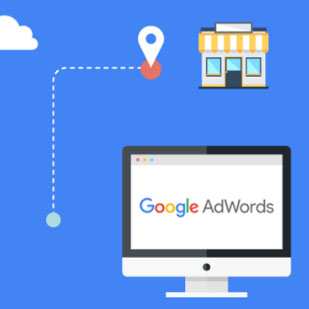Bidding Strategies at AdWords in Focus

by Pete Prestipino
16 Jan, 2023
If there is one digital profession that will likely be replaced by the convergence of machine learning and artificial intelligence, it is that of the performance advertising manager.
Today's leading advertising solutions and platforms foresaw what we now only consider inevitable - that machines are simply better at making real-time adjustments based on pre-defined audience criteria, they are better at organization, and much, much better at analysis too.
While advertising professionals won't be out of work any time soon, their jobs are about to become much less complicated. Decision making will be done on their behalf, the guesswork will be eliminated, and the constant monitoring will be no more. With some forethought on the part of the brand manager and coupled with some powerful technologies, the time and resources invested can be optimized.
Automated bidding strategies are perhaps the most significant development in the past ten years in terms of advertising. Each type of available strategy is dependent on the goals of the business. Google's introduction of "Smart Bidding" strategies is the latest iteration although they've been around for some time.
Let's take a look at the different strategies and their advantages and disadvantages to determine which is the best fit for a specific advertising campaign.
+ Maximize Clicks: If the goal is to increase site visits, this bid strategies should be considered as it will automatically set bids in a way that is designed to capture as many clicks as possible based on the allotted budget. The Maximize Clicks bid strategy can be employed on the campaign or portfolio level (across multiple campaigns, ad groups, or keywords). Advertisers can set a cap on bids for any keywords, ad groups or campaigns when using the strategy and indicate their target spend as well. To make the most of this approach, also consider using bid adjustments, scheduling ads for certain days or during specific times too.
+ Target Search Page Location: In the minds of many advertisers, if you're not on the first page, you might as well be on the last. The Target Search Page Location strategy is ideal for those looking to increase visibility on the first page and top positions of Google search results as advertisers will have their bids raised or lowered automatically to always ensure their ad shows where they want - at the top of the first search results page, or anywhere on the first search results page. This particular strategy is only available as a portfolio bid strategy on the Search Network.
+ Target Outranking Share: For the hyper-competitive advertisers, the Target Outranking Share strategy is often a perfect fit. The approach enables advertisers to choose another advertiser's domains (those with a history of bidding the same auctions as your ads) they want to outrank in ad position and how often they want to outrank it. AdWords will then automatically set search bids to meet that target to outrank the selected domain (bids can also be set manually, but will adjusted by AdWords). This bid strategy is also portfolio based.
The previous bidding strategies are best suited to those with objectives that aren't necessarily driven by a need for actual conversions. Fortunately, AdWords has made available several different Smart Bidding strategies with this advertising in mind as well - and they keep getting better with time.
+ Target CPA: For those advertisers that are driven by an awareness of their cost-per-acquisition (CPA), this bidding strategy, which uses historical campaign data and contextual signals at the time of the auction, is ideal as it automatically sets Search or Display bids with the aim of businesses getting as many conversions as possible at the target set by the advertiser. Previously known as "Conversion Optimizer," the Target CPA strategy can be applied on both the campaign and portfolio level.
+ Target ROAS: For those with more than one type of conversion goal (and values for those conversions), a strategy that aims to ensure advertisers return meets (or exceeds) their advertising spend is the most appropriate option. AdWords does this by automatically adjusting max CPC bids to maximize conversions while trying to reach the target ROAS. Those using this strategy will need to have a history of conversions (at least 50 in the past 30 days).
+ Maximize Conversions: The newest bidding strategy (released late May 2017), advertisers that employ this approach will have their bids set automatically by AdWords in order to get the most conversions for a campaign while fully spending the available budget. Read more about this particular maximize conversions bidding strategy and the early results seen by advertisers now.
There are many different settings for each strategy so if you are considering one (or more) of these approaches then do take the time to review the limits of each before making the change on campaign, portfolio or account levels. If you're looking to get the most from your AdWords spend, and reduce time spent on management, automated and smart bidding strategies could prove to be the perfect fit.
Today's leading advertising solutions and platforms foresaw what we now only consider inevitable - that machines are simply better at making real-time adjustments based on pre-defined audience criteria, they are better at organization, and much, much better at analysis too.
While advertising professionals won't be out of work any time soon, their jobs are about to become much less complicated. Decision making will be done on their behalf, the guesswork will be eliminated, and the constant monitoring will be no more. With some forethought on the part of the brand manager and coupled with some powerful technologies, the time and resources invested can be optimized.
Automated bidding strategies are perhaps the most significant development in the past ten years in terms of advertising. Each type of available strategy is dependent on the goals of the business. Google's introduction of "Smart Bidding" strategies is the latest iteration although they've been around for some time.
Let's take a look at the different strategies and their advantages and disadvantages to determine which is the best fit for a specific advertising campaign.
+ Maximize Clicks: If the goal is to increase site visits, this bid strategies should be considered as it will automatically set bids in a way that is designed to capture as many clicks as possible based on the allotted budget. The Maximize Clicks bid strategy can be employed on the campaign or portfolio level (across multiple campaigns, ad groups, or keywords). Advertisers can set a cap on bids for any keywords, ad groups or campaigns when using the strategy and indicate their target spend as well. To make the most of this approach, also consider using bid adjustments, scheduling ads for certain days or during specific times too.
+ Target Search Page Location: In the minds of many advertisers, if you're not on the first page, you might as well be on the last. The Target Search Page Location strategy is ideal for those looking to increase visibility on the first page and top positions of Google search results as advertisers will have their bids raised or lowered automatically to always ensure their ad shows where they want - at the top of the first search results page, or anywhere on the first search results page. This particular strategy is only available as a portfolio bid strategy on the Search Network.
+ Target Outranking Share: For the hyper-competitive advertisers, the Target Outranking Share strategy is often a perfect fit. The approach enables advertisers to choose another advertiser's domains (those with a history of bidding the same auctions as your ads) they want to outrank in ad position and how often they want to outrank it. AdWords will then automatically set search bids to meet that target to outrank the selected domain (bids can also be set manually, but will adjusted by AdWords). This bid strategy is also portfolio based.
The previous bidding strategies are best suited to those with objectives that aren't necessarily driven by a need for actual conversions. Fortunately, AdWords has made available several different Smart Bidding strategies with this advertising in mind as well - and they keep getting better with time.
+ Target CPA: For those advertisers that are driven by an awareness of their cost-per-acquisition (CPA), this bidding strategy, which uses historical campaign data and contextual signals at the time of the auction, is ideal as it automatically sets Search or Display bids with the aim of businesses getting as many conversions as possible at the target set by the advertiser. Previously known as "Conversion Optimizer," the Target CPA strategy can be applied on both the campaign and portfolio level.
+ Target ROAS: For those with more than one type of conversion goal (and values for those conversions), a strategy that aims to ensure advertisers return meets (or exceeds) their advertising spend is the most appropriate option. AdWords does this by automatically adjusting max CPC bids to maximize conversions while trying to reach the target ROAS. Those using this strategy will need to have a history of conversions (at least 50 in the past 30 days).
+ Maximize Conversions: The newest bidding strategy (released late May 2017), advertisers that employ this approach will have their bids set automatically by AdWords in order to get the most conversions for a campaign while fully spending the available budget. Read more about this particular maximize conversions bidding strategy and the early results seen by advertisers now.
There are many different settings for each strategy so if you are considering one (or more) of these approaches then do take the time to review the limits of each before making the change on campaign, portfolio or account levels. If you're looking to get the most from your AdWords spend, and reduce time spent on management, automated and smart bidding strategies could prove to be the perfect fit.

Pete Prestipino
Digital marketing executive with proven experience in all aspects of search engine optimization (SEO), performance-based advertising, consumer-generated/social media, email marketing, lead generation, Web design, usability, and analytics. - 20-year Internet marketing veteran, currently serving as the Digital Marketing Campaign Manager at Antenna Group (formerly Chicago Digital). - Former Editor-In-Chief of Website Magazine, and a regular speaker on Web technology digital marketing strategy - Author of several books on digital marketing Including Web 360: The Fundamentals of Web Success; Affiliate 360: The Fundamentals of Performance Marketing; Domains 360: The Fundamentals of Buying & Selling Domain Names, and SEO 360: The Fundamentals of Search Engine Optimization.








